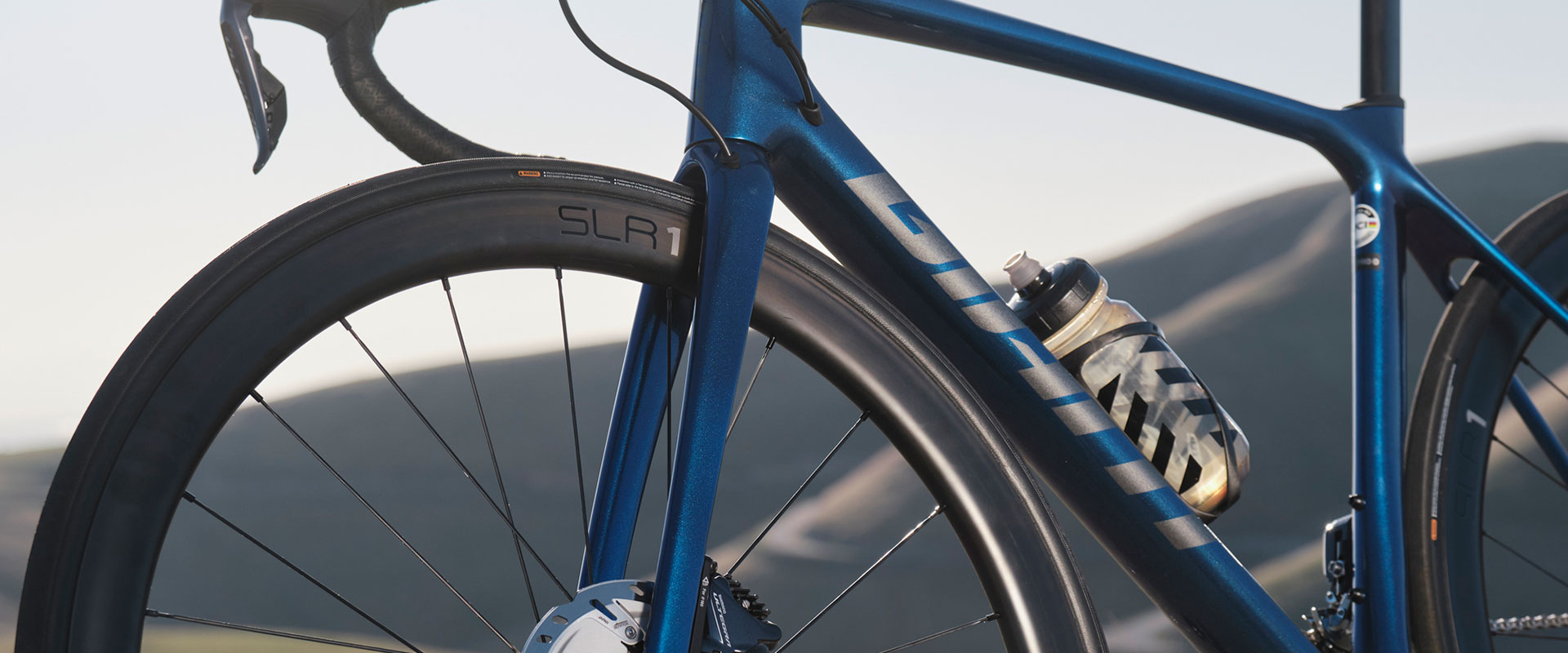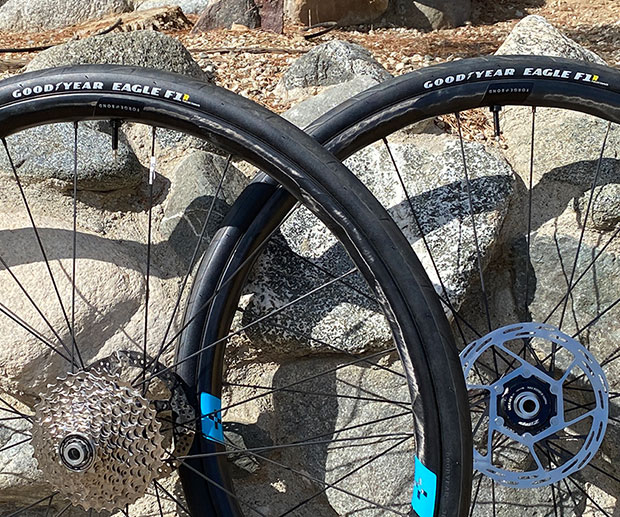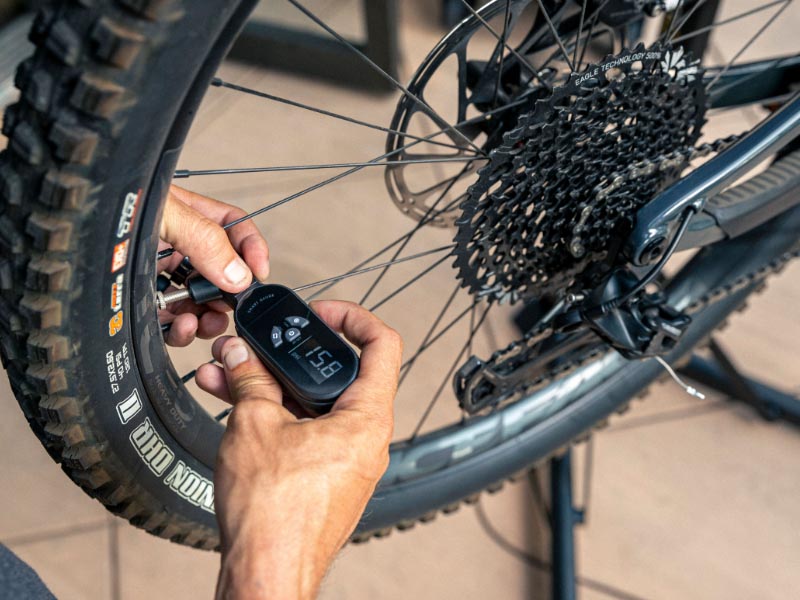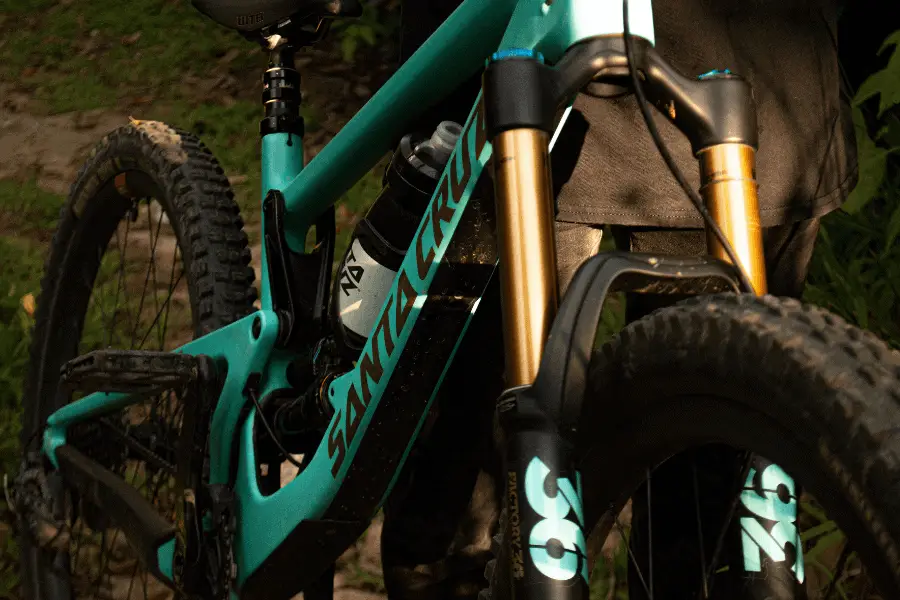Maintaining the correct tire pressure for your bicycle is crucial for achieving optimal performance, safety, and comfort. Incorrect tire pressure can lead to inefficient riding, increased risk of punctures, and reduced control. However, determining the right tire pressure can be complex, as it depends on various factors such as rider weight, tire type, and riding conditions. A bicycle tire pressure calculator simplifies this process by providing accurate pressure recommendations based on these variables. Consequently, this article explores the importance of proper tire pressure, the factors influencing it, and how to use a bicycle tire pressure calculator effectively. Therefore, understanding these aspects will help you ride more efficiently and safely.

The Importance of Proper Tire Pressure
Proper tire pressure is essential for several reasons, including ride quality, safety, and tire longevity. Understanding the significance of maintaining correct tire pressure helps you appreciate the benefits it offers. Therefore, exploring the importance of proper tire pressure is crucial for all cyclists.
Ride Quality and Comfort
One of the primary reasons for maintaining correct tire pressure is to ensure optimal ride quality and comfort. Properly inflated tires provide a smoother ride, as they can absorb road irregularities more effectively. This reduces the impact on both the rider and the bicycle, leading to a more enjoyable and comfortable riding experience. Overinflated tires, on the other hand, can make the ride harsh and uncomfortable, as they are less capable of absorbing shocks. Underinflated tires can cause excessive rolling resistance, making pedaling more difficult and tiring. Therefore, proper tire pressure significantly enhances ride quality and comfort.
Safety and Control
Another critical reason for maintaining proper tire pressure is to ensure safety and control while riding. Correct tire pressure provides better traction and grip, which is essential for maintaining control, especially in wet or slippery conditions. Overinflated tires can reduce the contact area with the road, leading to decreased traction and a higher risk of skidding. Underinflated tires can cause instability and increase the likelihood of punctures or blowouts. By keeping your tires at the recommended pressure, you can ensure better handling and stability, reducing the risk of accidents. Therefore, proper tire pressure is vital for safety and control.

Factors Influencing Tire Pressure
Several factors influence the recommended tire pressure for your bicycle, making it essential to consider them when determining the correct pressure. Understanding these factors helps you make informed decisions about tire pressure adjustments. Therefore, exploring the factors influencing tire pressure is important for accurate calculations.
Rider Weight
One of the most significant factors affecting tire pressure is the rider’s weight. Heavier riders require higher tire pressure to support their weight and maintain optimal performance. Conversely, lighter riders can use lower tire pressure for better comfort and traction. A general rule of thumb is to add 1 psi for every 10 pounds over 150 pounds and subtract 1 psi for every 10 pounds under 150 pounds. This adjustment ensures that the tires provide sufficient support and reduce the risk of pinch flats. Therefore, considering rider weight is essential for determining the correct tire pressure.
Tire Type and Size
The type and size of the tire also play a crucial role in determining the recommended tire pressure. Different tire types, such as road, mountain, and hybrid tires, have varying pressure requirements. Road tires typically require higher pressure (80-130 psi) for reduced rolling resistance and better speed. Mountain bike tires, on the other hand, require lower pressure (30-50 psi) for improved traction and shock absorption. Hybrid tires fall somewhere in between. Additionally, larger tires, such as those found on mountain bikes, generally require lower pressure compared to narrower road tires. Therefore, considering tire type and size is important for accurate tire pressure calculations.

Using a Bicycle Tire Pressure Calculator
A bicycle tire pressure calculator simplifies the process of determining the correct tire pressure by considering various influencing factors. Understanding how to use this tool effectively ensures accurate pressure recommendations. Therefore, exploring the steps involved in using a bicycle tire pressure calculator is essential for optimal results.
Inputting Relevant Information
The first step in using a bicycle tire pressure calculator is to input the relevant information accurately. This typically includes rider weight, tire type, tire size, and the type of terrain or riding conditions. Some calculators may also ask for additional details such as the type of bike and riding style (e.g., racing, commuting, or off-road). By providing accurate information, the calculator can generate more precise tire pressure recommendations tailored to your specific needs. Therefore, inputting relevant information correctly is crucial for obtaining accurate results from a tire pressure calculator.
Interpreting the Results
Once the calculator processes the input data, it will provide recommended tire pressure values for both the front and rear tires. These values are usually given in psi (pounds per square inch) or bar (metric unit). It’s important to note that the front tire often requires slightly lower pressure compared to the rear tire, as the rear tire bears more weight. Additionally, keep in mind that these recommendations are starting points and may need slight adjustments based on personal preferences and riding conditions. Regularly checking the tire pressure with a reliable gauge ensures that your tires remain within the recommended range. Therefore, interpreting the results correctly helps you maintain optimal tire pressure.

Additional Tips for Maintaining Proper Tire Pressure
Maintaining proper tire pressure involves more than just using a calculator. Implementing additional tips and practices can help you keep your tires in top condition. Therefore, exploring these additional tips ensures comprehensive tire maintenance.
Regularly Checking Tire Pressure
One of the most important tips for maintaining proper tire pressure is to check it regularly. Tire pressure can fluctuate due to temperature changes, riding conditions, and natural air leakage. It’s recommended to check tire pressure at least once a week or before long rides using a reliable pressure gauge. This practice ensures that your tires are always within the recommended range, providing optimal performance and safety. Additionally, monitoring tire pressure can help identify slow leaks or other potential issues early on. Therefore, regularly checking tire pressure is essential for maintaining proper inflation.
Using Quality Tire Pumps
Investing in a quality tire pump is crucial for maintaining accurate tire pressure. High-quality floor pumps with built-in pressure gauges provide more precise readings and make inflating tires easier. Portable hand pumps are useful for on-the-go adjustments and emergencies, but they may not offer the same accuracy as floor pumps. Ensure that the pump you choose is compatible with your valve type (Presta or Schrader) and can reach the required pressure range for your tires. By using a reliable tire pump, you can maintain consistent and accurate tire pressure. Therefore, using quality tire pumps is important for effective tire maintenance.
Common Mistakes to Avoid
Avoiding common mistakes when maintaining tire pressure can help prevent issues and prolong the life of your tires. Understanding these mistakes allows you to take proactive measures for better tire care. Therefore, exploring common mistakes ensures more effective tire pressure maintenance.

Overinflating or Underinflating Tires
One common mistake is overinflating or underinflating tires. Overinflated tires may result in a harsh ride and reduced traction, while underinflated tires can cause excessive rolling resistance and increase the risk of punctures. Always refer to the manufacturer’s recommended pressure range indicated on the tire sidewall and use a reliable pressure gauge to avoid these issues. Adjust the pressure based on rider weight, terrain, and riding conditions to ensure optimal performance. Therefore, avoiding overinflation and underinflation is crucial for maintaining proper tire pressure.
Ignoring Terrain and Riding Conditions
Another common mistake is ignoring terrain and riding conditions when setting tire pressure. Different terrains, such as smooth roads, rough trails, or muddy paths, require different tire pressures for optimal performance and safety. For example, lower tire pressure provides better traction on rough or loose surfaces, while higher pressure reduces rolling resistance on smooth pavement. Adjusting tire pressure based on the specific riding environment ensures better control and comfort. Therefore, considering terrain and riding conditions is essential for accurate tire pressure adjustments.
Conclusion: Enhancing Your Riding Experience
Maintaining proper bicycle tire pressure is essential for ensuring optimal performance, safety, and comfort. With the help of a bicycle tire pressure calculator, you can easily determine the correct pressure based on various influencing factors. By considering rider weight, tire type, and riding conditions, you can make informed adjustments to achieve the best results.
Implementing additional tips, such as regularly checking tire pressure and using quality pumps, further enhances your ability to maintain proper inflation. Avoiding common mistakes, like overinflating or underinflating tires, ensures a smoother and safer riding experience.
Therefore, understanding the importance of proper tire pressure and using the right tools and practices enables you to enjoy a more efficient and enjoyable ride. Embrace these strategies and optimize your bicycle’s performance for every journey ahead. Happy riding!

